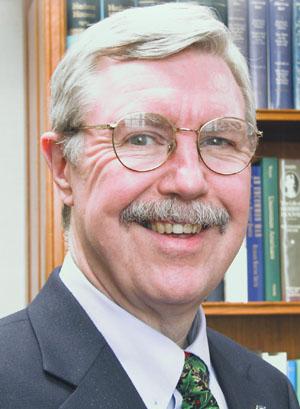
By Timothy Walch
“Black veiled monsters” — that’s what some of my Catholic school friends called their teachers. You see, these teachers were members of the Sisters of Charity of the Blessed Virgin Mary.
But monsters? Hardly! In fact, they were among an extraordinary group of women who dedicated their lives to Americans in need. Some were teachers; others were nurses, scientists, social workers and much more. One Sister even served as mayor of Dubuque! In all, nearly 200,000 women religious have served the American people in a wide range of capacities from 1727 to the present. It’s not hyperbole to say that these women have been angels in our midst for more than 175 years.
An exhibit currently at the National Mississippi River Museum takes notice of this achievement. “Women and Spirit: Catholic Sisters in America” is the first national exhibition to focus on women religious and all that they have done to improve the quality of life in this country. It’s a $4 million, multi-media display that’s been touring the country since August of 2009 and continues in Dubuque until May 22.
One section of the exhibit highlights the critical role the Sisters played in our health care system. Millions of Americans of all religious faiths have been treated in Mercy hospitals, many receiving care from the Mercy Sisters themselves. Even today, one in six patients in this country is being treated in a Catholic health care institution. Talk about “Obama care,” what about “Sister care!”
Less visible but no less important is the role that these women played in the care of the elderly, the indigent and the orphaned. Long before this country had a social welfare system, Catholic women religious provided food and shelter for the least among us. These Sisters lived values of service above self without any expectation of reward or recognition.
And the exhibit will remind Catholics of a certain age of the Sisters who staffed the parish schools. Beginning in the 1840s and continuing to the 1970s, tens of thousands of Sister teachers from hundreds of religious orders educated tens of millions of young Catholic children. Without this corps of selfless educators, the parochial school system in this country would not have been possible.
These women also played roles in many of the great events of the American experience. For example, 600 Sisters from 21 religious orders nursed soldiers from both sides during the Civil War. Other Sisters were in Chicago after the fire in 1871, cared for the injured after the San Francisco earthquake in 1906 and ministered to the dying during the influenza epidemic of 1918. They were at the forefront of the Civil Rights movement in the 1960s and stayed on to help in the aftermath of Hurricane Katrina.
There are fascinating stories of individual Sisters. The exhibit tells the story of how Sister Blandina Segale talked Billy the Kid out of committing murder, and how Sister Mary Frances Sullivan developed better public sanitation systems in this country. You meet Sister Amata Mackett, who contributed to the creation of health care insurance. And don’t overlook Sister Florence Cloonan who nursed Ernest Hemingway after an auto accident and became the subject of one of his short stories.
Just as important, “Women and Spirit” is an antidote to the unfortunate caricatures that continue to appear on stage, screen and television. The comic images that are so vivid in “The Flying Nun,” “Nunsense,” and the “Sister Act” films are dispelled by this exhibit.
“These women helped foster a culture of social service that has permeated our society,” notes ABC News analyst Cokie Roberts in the exhibit. “Understanding and celebrating the history of women religious is essential to understanding and celebrating the history of America.” See this exhibit before it leaves Dubuque and don’t worry about any black veiled monsters!
(Timothy Walch is the author or editor of 17 books of American history including Parish School: American Catholic Parochial Education from Colonial Times to the Present. He can be reached at: Twalch47@aol.com.)








